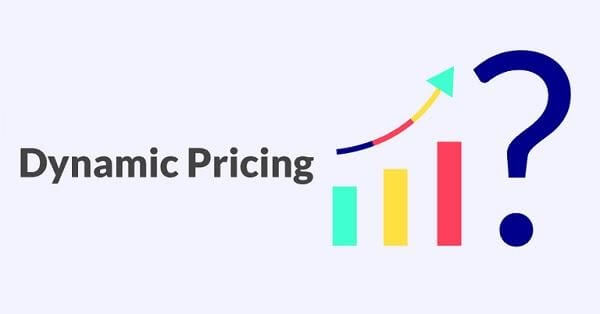For a customer looking to purchase a product online, its pricing is a primary concern. With the level of competition available today, the prices can make or break your business.
What can you do to make sure that your product/service pricing is just right?
You can’t satisfy every customer, but what you can do is create a general pricing strategy that caters to the population rather than the sample.
The statement above sounds pretty straightforward, but there’s a lot of trial and error involved in this.
Factors like production costs, market conditions, order value, and value to the customer matter a lot.
This post is written to give you a rundown of the eCommerce pricing strategies you need to apply in your eCommerce store. We’ll discuss five of the best tactics you can use.
So, let’s begin.
5 E-Commerce Pricing Strategies to Choose From
The eCommerce pricing strategies we’re going to discuss in the next sections are all based on making adjustments. The primary difference between them, however, are the metrics.
Cost Based Pricing

Let’s begin with the basics. Cost-based pricing is one of the most common strategies applied in the market.
It’s also the first thing taught in every eCommerce store out there.
It takes its basis on the product being sold. Take the cost of the product, add a profit margin and then you have the cost you’re going to charge for the product.
So, if a product costs $5 for you and you want a reasonable profit of 20% on it, you just have to add another dollar and you get the price of the product. The final price then becomes $6.
It doesn’t look like much, but for a $5 product, it covers the overheads and expenses. Now you can add as much of a profit margin depending on the cost it took you to source the product.
You can also absorb the shipping costs of the product into the product itself. This is useful since customers are wary about adding shipping costs to their purchase, which can result in increased cart abandonment.
The only problem with this model is its stable pricing. It would be unintuitive if you’re charging the same prices for an off-season product.
Bundle Pricing

Product bundles are a genius way to sell more products and maintain a healthy profit margin for your business. In this, retailers bundle complementary products together to sell more products to the consumer.
As complementary products are added, you automatically increase your average order value. Also, if you have products that aren’t sold as frequently, you can bundle them in the other products that you can use.
While this pricing strategy can be applied to virtually any product you sell, its primary usage is in the tech and skin care industries. Retailers in these industries usually combine laptop accessories and beauty products together.
Other applications of this include mobile accessories, food deals, children’s toys, and more. Even in the publishing industry, book collections (lord of the rings trilogy, game of thrones quadrilogy) are all sold in a neat bundle.
Market Pricing

Setting a product price based on the market rather than the production or sourcing costs. Sounds counterintuitive, right?
One competitor can have a very different price compared to the other. But it can be quite beneficial if you’re selling on a marketplace or even in a tightly knit industry.
Taking a cue from competitors’ prices, you can set your prices higher, lower, or the same.
If you’re almost at par with the competition, charging near their product prices is relatively low-risk and effective. You can even upend your competition if you shrink your production costs down to the minimum (without hurting product quality), then you can increase your customer base significantly.
At the same time, if you’re offering higher prices for your products, then you need to convince the customer that they’re paying for a high-end product. You can do that by adding value to your product quality or adding extra features to your offering.
While this strategy is effective, your days will be spent mostly monitoring what the competition is up to and then mirror that or make it more creative. For example, if the competitor is giving out a promotion, you can also provide it to your consumers.
If you play your cards right and apply the right strategies based on the mirror technique, then you can seriously take over your competitors’ business.
Consumer Based Pricing

This kind of pricing is based on the perceived value of the product. More specifically, the value the customer knows they can gain from that product. Will the customer pay for the product if it fulfills some hedonic or non-hedonic need?
This is the ultimate question of consumer-based pricing. If the answer to this is a yes, then your pricing will have to be adjusted. Take a look at the Apple iPhone and its brand association. Consumers are willing to pay because the value of having the iPhone, the prestige that comes with it, is enough to convince them.
If your product has that perceived value then you can charge the customer just about anything that’s under the borders of being reasonable. The product quality, when combined with the perceived quality can lead to brand loyalty for your products.
You might ask then, how do I make my product that influential?
The message is what matters. Most major products succeed because of both their product quality and how they brand their product. Some label their product with prestige, while some go for eco-friendliness. For example, Emirates prides itself on both quality and the comfort of a seamless flight. This is why people are willing to pay a higher price for an Emirates flight.
It’s an effective eCommerce pricing strategy when you go about implementing it.
Dynamic Pricing

Integrating dynamic pricing with your store boosts your competitive edge. It enables you to align your prices with competitors and gauge market performance effectively. For instance, using a plugin like Dynamic Pricing & Bulk Quantity Discounts, you can create and manage advanced pricing rules based on product quantities, categories, tags, or even the overall cart content. This flexibility allows businesses to tailor their pricing strategies to encourage bulk purchases and drive sales.
Whether focusing on individual items or overall cart quantities, such tools help implement versatile pricing strategies. This not only encourages bulk purchases but also leads to a noticeable increase in sales and customer satisfaction.
Final Words
All of the eCommerce pricing strategies we’ve given to you in this article have their ups and downs. The best way to go about implementing them is to apply them as a sort of A/B testing procedure.
If one thing doesn’t work, you can always go ahead and switch the strategy to the next one. In some cases, you will find that a combination of different strategies works out best for you.
If you wish to reduce your chances of failure through these strategies, you can create a map of your consumer preferences and their behavior in your store.
This will help you gain useful insights on what you need to do to ensure that your customers are targeted accordingly. This helps you reach out to them in an effective manner.
If you’re a WooCommerce B2B store owner and want to enhance your productivity, then B2BWoo is the best option for you. It’s a one-stop-shop for your every WooCommerce B2B eCommerce solutions.
